The temporomandibular joint (TMJ) is located in front of the ear and connects the lower jaw to the base of the skull. Its dysfunction can lead to pain during talking and eating. According to statistics, this pathology occurs to some degree in approximately 50% of people aged 20 to 50. We will discuss the causes of TMJ dysfunction, how it is treated, and what may happen if treatment is not initiated in time.
Definition of the Disease
TMJ dysfunction is a condition in which the temporomandibular joint partially or completely loses its functions. As a result, the patient may find it difficult to move the lower jaw or may be unable to do so at all. Consequently, they experience problems with diction, chewing food, and expressing emotions through facial expressions.
The temporomandibular joint is structured as follows: between the head of the lower jaw and the joint surface (socket) of the temporal bone lies a fibrous intra-articular disc. This disc is fused with the joint capsule on all sides. Ligaments and muscles help keep the joint in the correct position and limit the range of motion. Pain occurs when there is an attempt to exceed this limitation.
The TMJ allows the jaw to move in three directions:
- Vertical: to open and close the mouth;
- Horizontal: the lower jaw shifts left and right relative to the upper jaw;
- Sagittal: the lower jaw moves forward and backward relative to the upper jaw.
Causes of the Disorder
Dysfunction of the temporomandibular joint (TMJ) arises from various factors. Primarily, defects in the dental arch are involved, with occlusion issues—improper alignment of the teeth of both jaws—being particularly common.
The surfaces of the teeth have bumps and indentations that should align when the chewing surfaces of opposing teeth come into contact. If they do not align properly, compensatory mechanisms are activated. One such mechanism is a change in the tone of the masticatory muscles. The lower jaw shifts forward to achieve the necessary contact between the surfaces.
While the occlusal interference may disappear, the load on the TMJ increases. Over time, this can damage the anatomical structures of the joint, altering the shape of the joint surfaces and the intra-articular disc.
Other dental anomalies and bite pathologies, such as abnormal shape or size of teeth, can also contribute to this effect.
Additional causes of TMJ dysfunction include:
- Neuroses, chronic stress, and constant fatigue
- Blood pressure and heart rhythm disorders
- TMJ injuries resulting from accidents
- Postural issues leading to inefficient activity of the masticatory muscles
- Occlusal problems caused by periodontal damage, which affects the tissues surrounding the roots of teeth and their stability
- Improper or poor-quality dental treatments
- Vascular pathologies that disrupt blood supply to the joint
There is an opinion that individuals whose professions involve significant verbal activity are particularly susceptible to TMJ dysfunction. Frequent talking can lead to chronic microtrauma to the temporomandibular joint.
Symptoms of TMJ Dysfunction
There are three groups of signs indicating the disorder.
- Auditory Phenomena in the TMJ: When a patient opens their mouth to speak, chew, or yawn, a characteristic click can be heard. In some cases, the sound is loud enough for others to notice. Other sounds may include crunching, popping, and a unique creaking known as crepitus. Pain may not necessarily accompany these sounds.
- Locking or Catching of the Joint: The patient may find it difficult to open their mouth normally. To do so, they may need to move their lower jaw to find a position that allows them to "unlock" the joint.
- Pain Syndrome: Pain can occur not only in the TMJ area but also in the masticatory, cervical, and other muscles, leading to the development of trigger points. Tooth pain and headaches may also arise.
Other symptoms that may indicate dysfunction include:
- Complete locking of the TMJ in a specific position, preventing the person from opening their mouth
- Inability to chew hard foods due to pain or muscle fatigue
- Bruxism—unintentional grinding of teeth, often occurring at night
- Increased muscle fatigue while chewing
- Dizziness
- Sleep disturbances
- Tinnitus (noise or ringing in the ears)
- Depression
- Snoring
- Sleep apnea—brief pauses in breathing during sleep
If any of these symptoms are present, it is important to schedule an appointment with a doctor as soon as possible.
Pathogenesis
In cases of occlusal disorders, the joint pathways undergo forced restructuring. This results in functional overload in certain areas, leading to degenerative structural changes in the cartilage. These changes can cause discoordination of the natural movement of the joint heads, altering the joint surface and potentially leading to acute trauma.
The clicks and other sounds associated with TMJ dysfunction are a result of abrupt movements of the joint head and a decrease in synovial fluid. This fluid, which fills the joint, serves as a lubricant, ensuring smooth and pain-free movement of its components. When the joint surfaces collide and overcome these obstacles, characteristic sounds occur.
Causes of pain include:
- Compression of the neurovascular bundle located between the ligaments of the TMJ
- Stretching of the ligaments and joint capsule
- Irritation of nerve endings in the muscles surrounding the joint due to abnormal muscle tone
Headaches can arise from psychological tension.
TMJ dysfunction occurs when the cartilaginous surfaces of the joint are subjected to increased load. This damage prevents internal components from moving normally, causing them to rub against each other. This process is exacerbated by a reduction in synovial fluid.
Classification and Stages of Development
There is currently no universally accepted classification of this disorder in modern medicine. However, regardless of the underlying causes, two periods can be identified:
- TMJ Dysfunction: At this stage, the patient typically complains only of clicks accompanying the movements of the lower jaw. X-rays may show no significant structural changes.
- Painful Spasm of the Masticatory Muscles: As the disease progresses, the complex of joint cartilage surfaces and the surfaces of the articular disc undergo restructuring. The bony structure of the TMJ elements changes.
Pain can be classified by its origin. About 80% of patients experience arthrogenic pain syndrome, which arises in the joint, while 20% have myogenic pain, originating in the muscles.
There are no significant differences in the character of arthrogenic and myogenic pain; both types are associated with muscle hypertonicity, leading to the formation of trigger points or zones. Additionally, pain may arise from the overstretching of joint ligaments.
Patients often find it challenging to describe their pain. As the condition progresses and symptoms multiply, they may feel lost and uncertain about which specialist to consult or what to prioritize in their complaints.
Possible Complications
What happens if TMJ dysfunction is left untreated? The patient will experience pain and difficulties in opening their mouth. Pain may occur unexpectedly during jaw movement while talking or chewing. Gradually, the situation will worsen, potentially leading to complications.
- Ankylosis: This refers to joint immobility due to the fusion of the articulating bone ends. The only solution is surgical intervention.
- Arthrosis and Osteoarthritis: These conditions involve the degeneration of cartilage tissue. The joint will lose its functionality and mobility, with a very low chance of recovery.
- Bruxism: This is the involuntary grinding of teeth caused by spasms of the masticatory muscles, often occurring at night when the person cannot control their muscle movements. Bruxism significantly increases the load on teeth and surrounding ligaments, leading to rapid enamel wear, cavities, and possibly pulpitis. Treating the affected teeth becomes difficult, with a risk of loss.
- Infection of TMJ Components: This can trigger an inflammatory process in the meninges, leading to a serious condition known as meningitis. Symptoms include severe headaches, fever, and a sharp rise in temperature, often accompanied by photophobia and possible loss of consciousness. Without timely and adequate treatment, this can be fatal.
Diagnosis
During the initial consultation, the doctor will listen to complaints, clarify the medical history, and determine if there are any comorbid conditions. Patients should answer questions accurately and informatively.
The specialist will:
- Examine the head and neck, paying attention to the proportions and symmetry of the face.
- Assess the oral cavity, determine the type of bite, and check if all teeth are present.
In examining the TMJ, the doctor will assess how mobile the lower jaw is, checking if the patient can open their mouth and if this is accompanied by pain. They will also look for swelling and indentations around the joint heads.
The doctor will perform auscultation using a stethoscope and palpate the TMJ area. If dysfunction is suspected, an occlusogram may be taken to evaluate the degree of occlusion.
Additional diagnostic methods include:
- Gnathodynamometry: To measure the strength of masticatory muscles.
- X-rays and Tomography: To assess the condition of the dental and jaw system and visualize the bony elements of the joint.
- Magnetic Resonance Imaging (MRI): To identify displacements of the intra-articular disc and assess the degree and nature of its deformation.
Can I Overcome TMJ Arthritis With Treatment?
There is no universal method for restoring the functionality of the temporomandibular joint (TMJ). The effectiveness of therapy or surgical intervention depends on accurately identifying the underlying causes of the disorder.
Conservative Therapy aims to:
- Alleviate acute symptoms of the condition
- Reduce or completely eliminate symptoms
- Restore the functionality of the lower jaw
To manage pain, doctors may prescribe sedatives, antidepressants, nerve blocks, and intra-articular injections of glucocorticoids. Physiotherapy techniques, such as electrophoresis, phonophoresis, and ultrasound, can yield good results. Massage and myofunctional exercises, which develop the masticatory and cervical muscles, are also beneficial.
Dental treatment may be necessary to normalize the bite and correct occlusal disorders, including:
- The use of orthopedic devices like splints, retainers, or braces
- Prosthetics or re-prosthetics
- Teeth reshaping
The best outcomes are achieved through a comprehensive approach that combines medication, physiotherapy, and orthopedic correction aimed at restoring the dental arch and normalizing the bite.
If these methods do not yield results, surgical intervention may be required. However, even a well-executed surgery does not guarantee a full restoration of TMJ functions.
First Aid
Pain from TMJ dysfunction can resemble that of a dislocation or subluxation. In cases of acute pain, it is important to:
- Keep the joint at rest—avoid eating, laughing, and minimize talking
- Take a pain reliever
- Consult a doctor and undergo any recommended examinations
Do not apply heat to the painful joint, especially if the cause of the pain is unknown. While heat may provide slight relief in some cases, it can worsen a dislocation by increasing blood flow to the area, making it more difficult to reposition the joint. Therefore, any attempts to self-treat should be avoided, and a doctor should make decisions regarding further actions.
Prognosis and Prevention
The prognosis for temporomandibular joint (TMJ) dysfunction largely depends on the stage at which the condition is diagnosed. The effectiveness of treatment is also influenced by the patient’s willingness to adhere strictly to the doctor’s recommendations.
If TMJ dysfunction is identified in the early stages, before any visible structural changes occur, the likelihood of completely resolving the issue is high with appropriate conservative therapy. However, the clinical outcome may be uncertain in the following situations:
- Significant loss of cartilage surfaces
- Tear or perforation of the intra-articular disc
- Bony deformation
In these cases, even surgical intervention may not fully restore joint functionality.
To reduce the risk of TMJ dysfunction, it is essential to:
- Address dental arch defects and dental anomalies
- Avoid harmful habits, such as chewing on one side of the jaw, biting pens and pencils, or clenching teeth during emotional stress
- Manage stress levels, avoid fatigue, and refrain from placing excessive strain on the body
- Lead a healthy lifestyle and strengthen the immune system
- Maintain a balanced diet, minimizing hard foods where possible
- Practice good oral hygiene
- Follow safety protocols during sports and specific work activities
Regular dental check-ups twice a year are crucial for early detection. A dentist can identify signs of developing issues even before you experience concerning symptoms.
AESTHETE Dental Clinic is located in Dubai (UAE), on Bluewaters Island. We address bite pathologies, dental anomalies, and other issues that may lead to TMJ dysfunction. Our clinic features highly qualified doctors with extensive practical experience who use modern techniques. Equipped with diagnostic tools and necessary instruments, our dental professionals ensure excellent results.
Our administrators are available to answer questions, help you choose an appointment time, and schedule visits with our doctors.
Questions and Answers
How is the temporomandibular joint (TMJ) treated?
The treatment approach depends on the underlying cause of the disorder. Based on diagnostic results, the doctor will choose an appropriate method, which may include fitting special splints or appliances to correct the bite and address jaw alignment issues, pharmacotherapy, and physiotherapy. In complex cases, surgical intervention may be necessary.
Which doctor treats the temporomandibular joint?
A gnathologist specializes in treating TMJ dysfunction. However, you can first consult a general practitioner or family doctor, who can refer you to a specialist.
How is TMJ arthrosis treated?
The treatment plan is determined based on diagnostic results. The doctor may prescribe medication, such as chondroprotectors to restore cartilage, muscle relaxants to relieve muscle spasms, and anti-inflammatory drugs. Physiotherapy and specific exercises are also recommended to improve lower jaw function.
How long does TMJ treatment take?
The duration of treatment varies depending on the cause of the disorder and its stage. Typically, the issue can be resolved within 1 to 3 months, but if the condition is advanced, it may take several years.
Referense
- TMJ disorders. National Institute of Dental and Craniofacial Research.
- Hupp JR, et al., eds. Management of temporomandibular disorders. In: Contemporary Oral and Maxillofacial Surgery. 7th ed. Elsevier; 2019.
- Omiunu A, Talmor G, Nguyen B, et al. Septic Arthritis of the Temporomandibular Joint: A Systematic Review. J Oral Maxillofac Surg. 2021;79(6):1214-1229.














